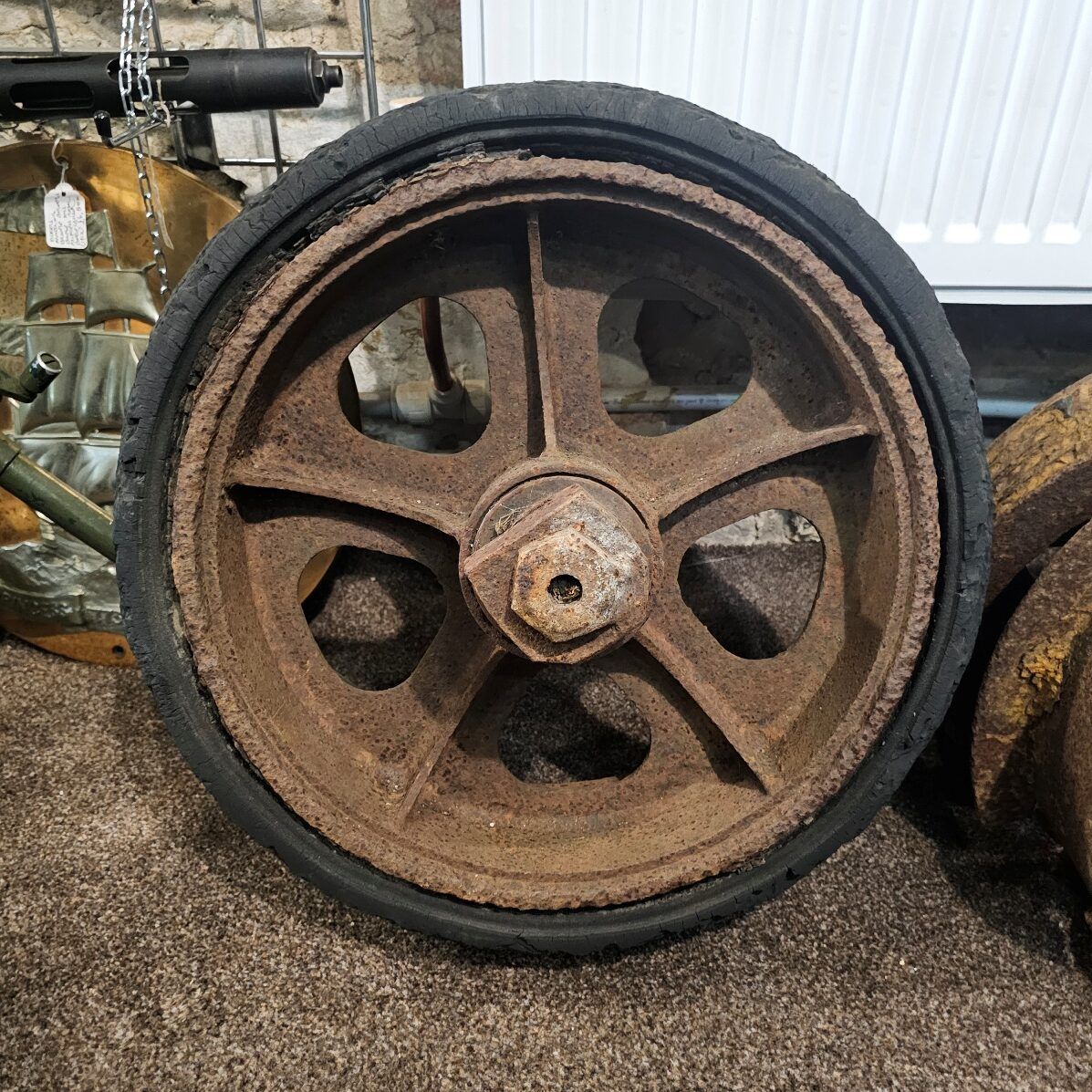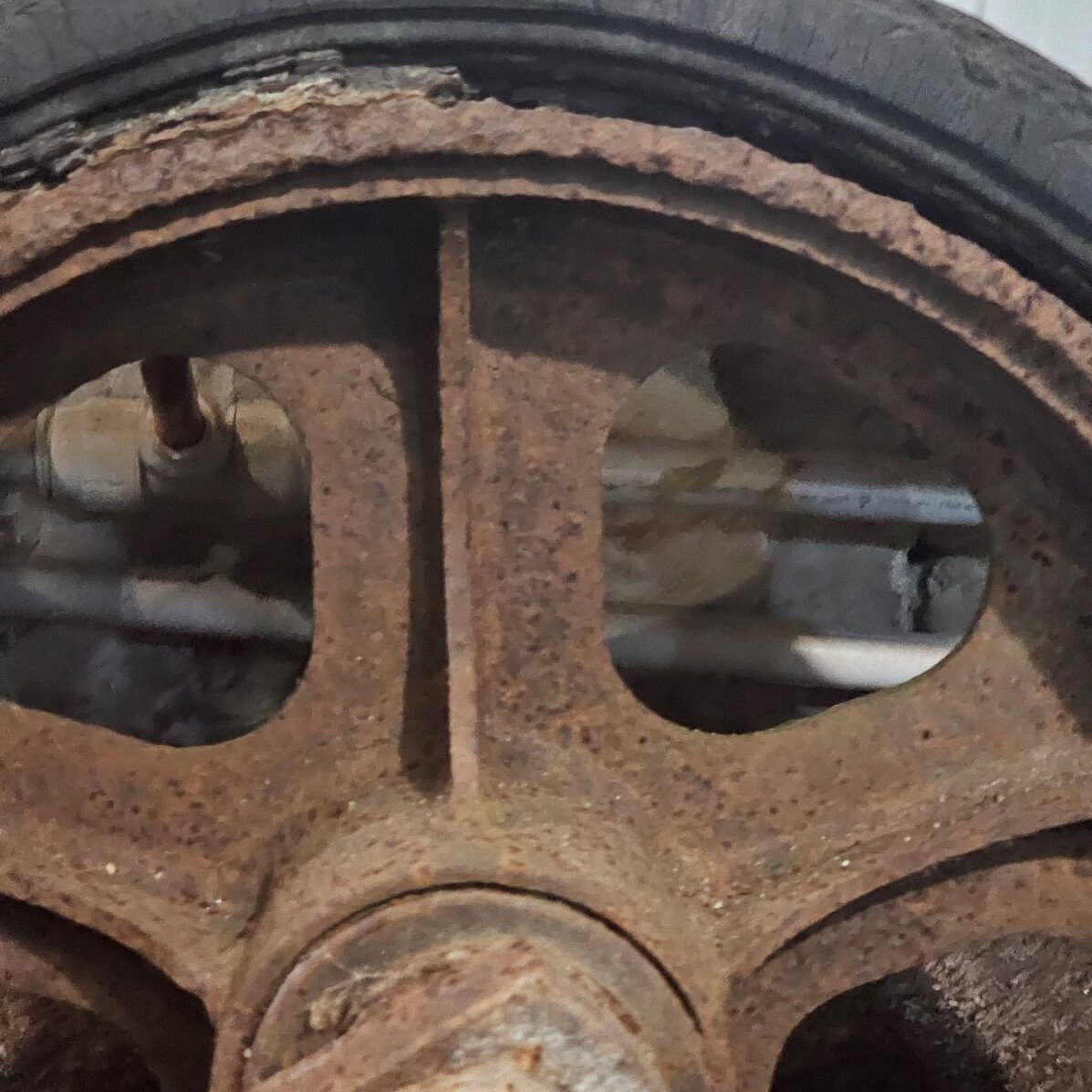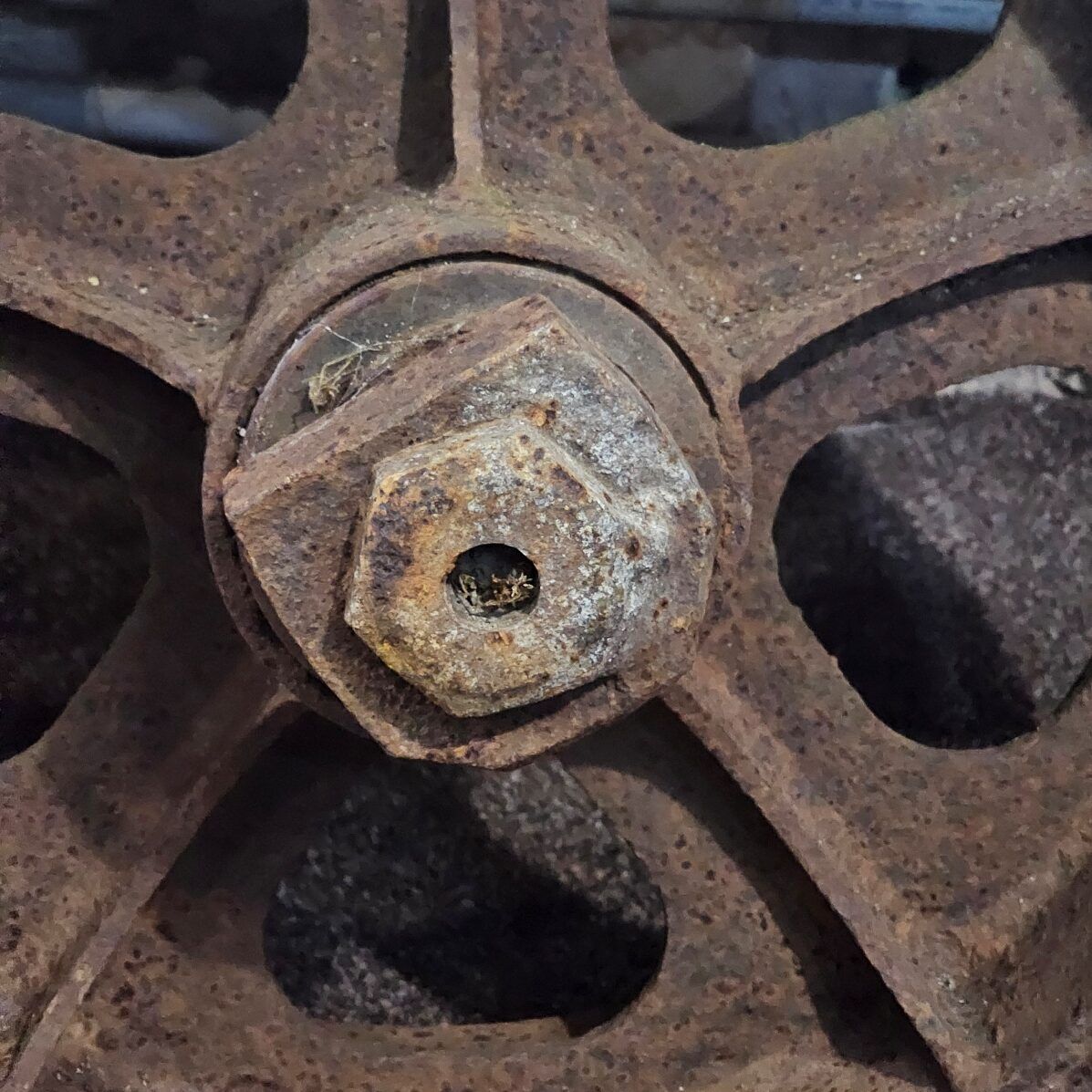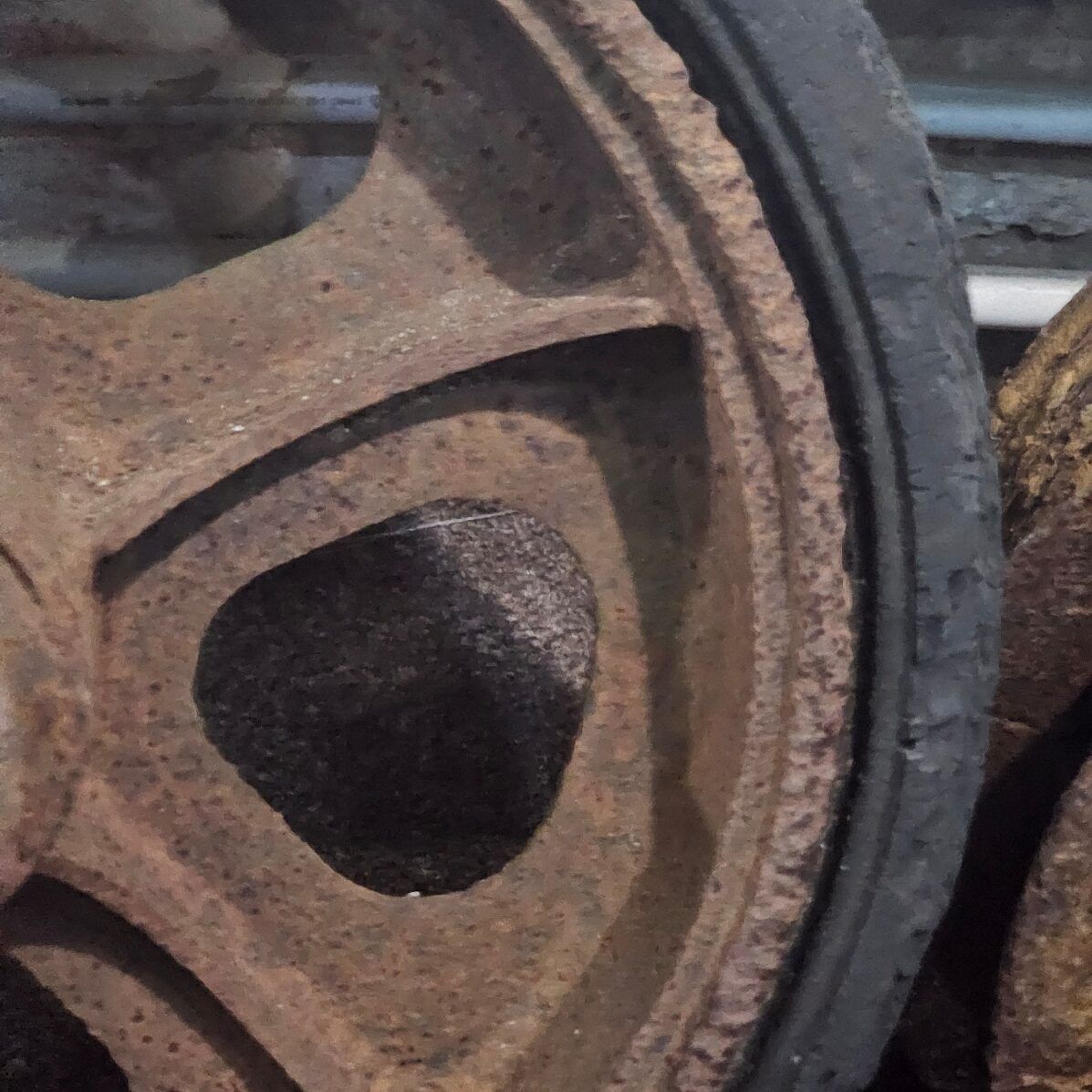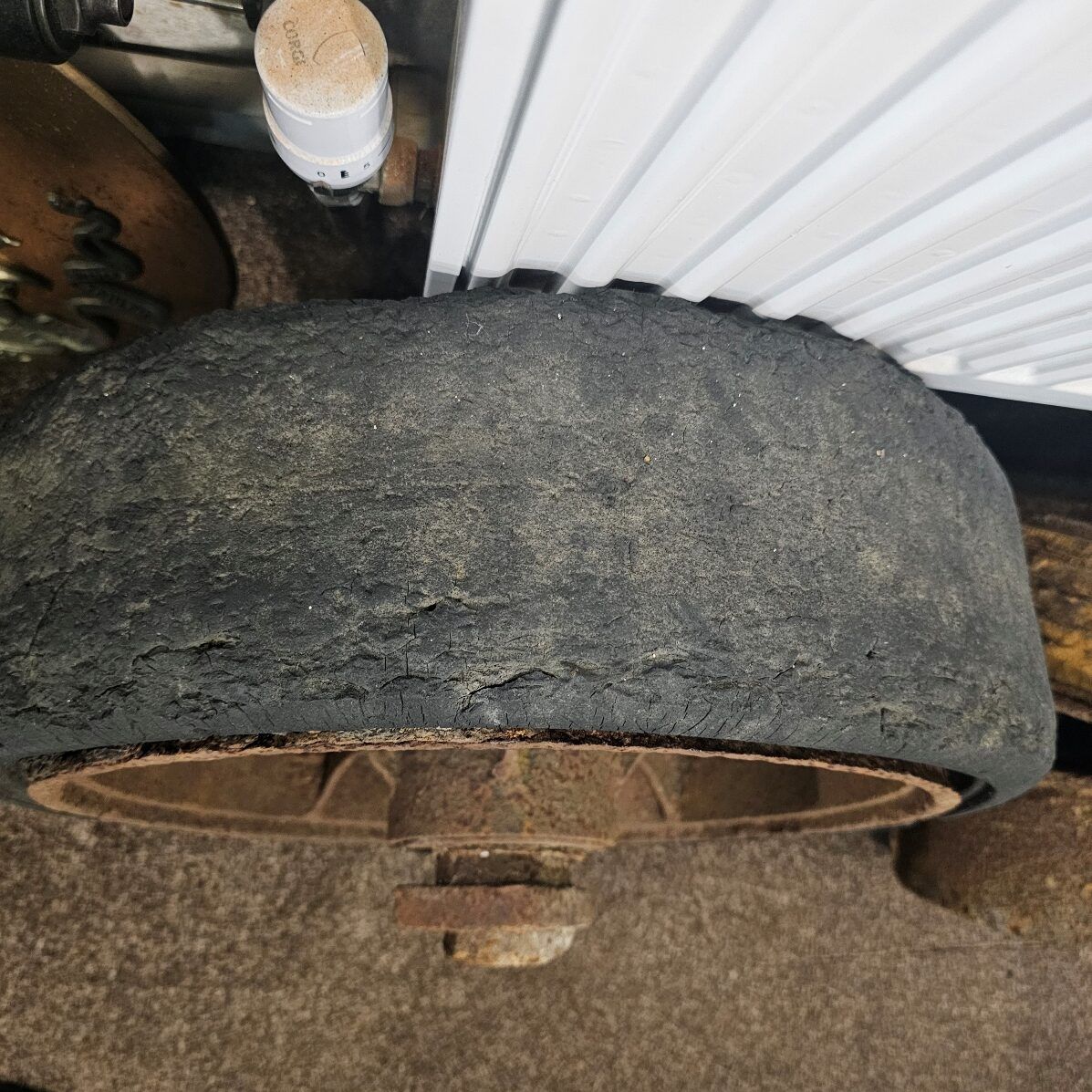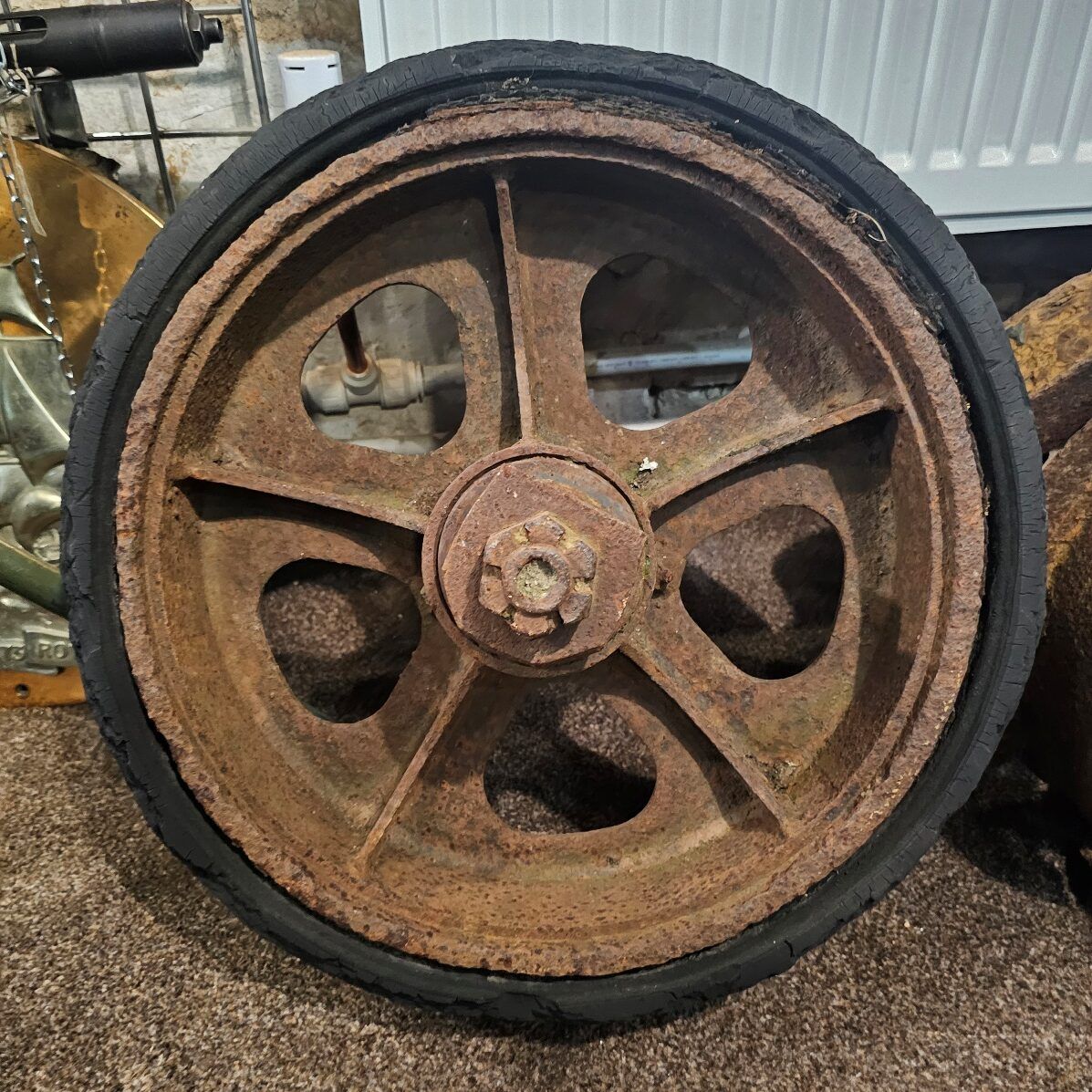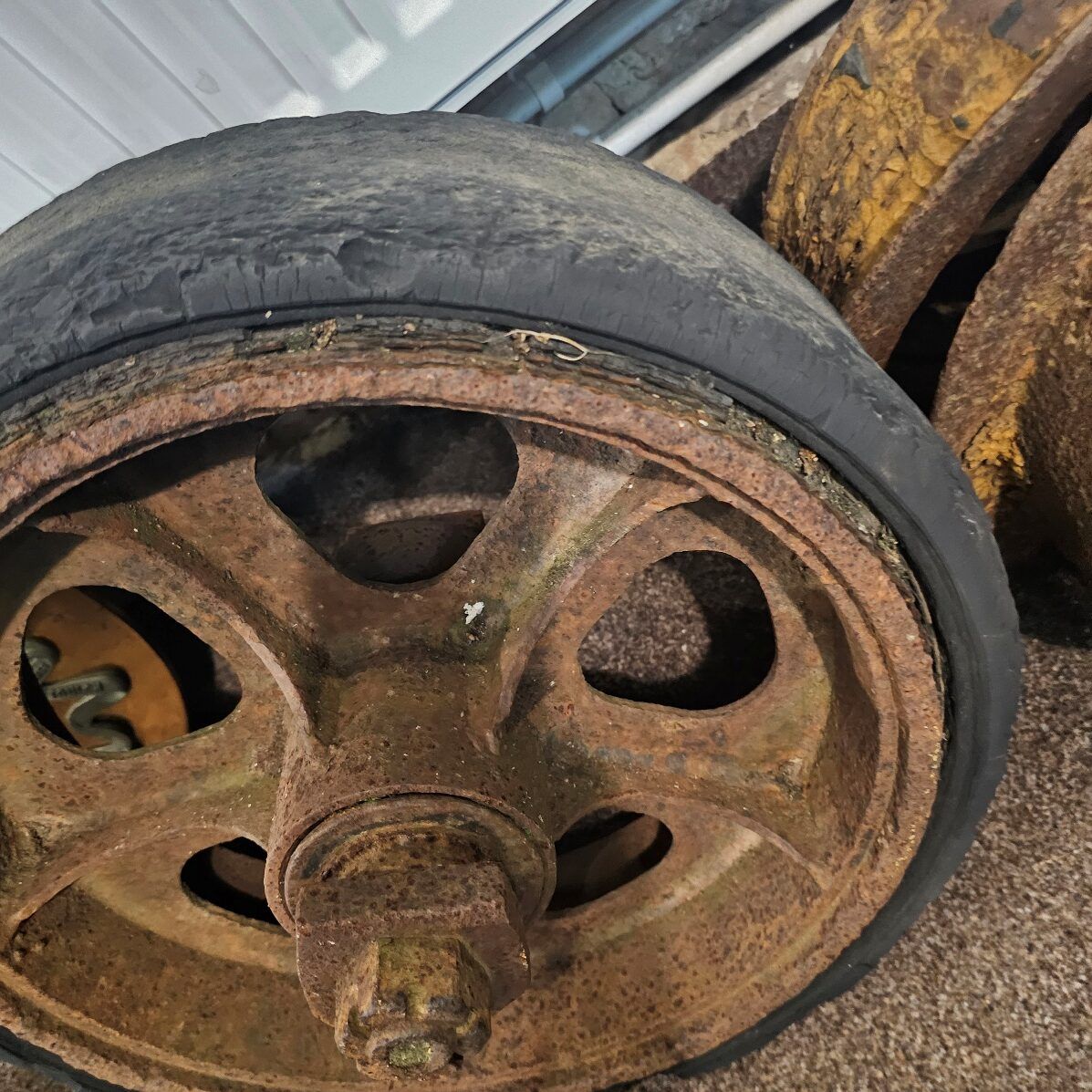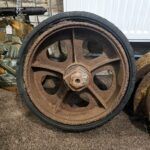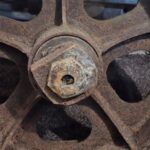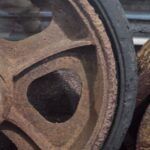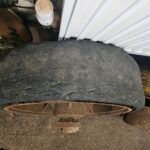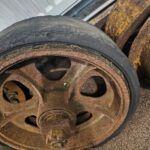~ Road Wheel of a WW2 American M3 Stuart Tank ~
The road wheels of the M3 Stuart tanks were key components of their suspension systems, designed to support the vehicle’s weight, maintain mobility over rough terrain, and provide a stable platform for maneuvering in combat.
M3 Stuart Tank Road Wheel:
The M3 Stuart was a light tank used primarily by the U.S. and Allied forces during World War II. It was known for its speed and agility, making it ideal for reconnaissance missions. However, due to its lighter armor and armament, it was not as heavily relied upon for direct combat against enemy tanks.
Description of M3 Stuart Road Wheel:
Material: The road wheels of the M3 Stuart were made from steel with a rubber tire around the rim to provide cushioning and traction.
Diameter: Approximately 19 inches (48 cm) in diameter.
Design: These wheels were spoked or solid, depending on the production model and were designed to be part of the vertical volute spring suspension (VVSS) system. The Stuart’s light weight meant that it used relatively small and simpler road wheels compared to heavier tanks.
Number of Wheels: The M3 Stuart had four road wheels on each side of the tank, arranged in pairs on bogies. Each pair was supported by volute springs, providing suspension to absorb shocks from uneven ground.
Historical Context: The M3 Stuart was introduced in 1941 and used throughout World War II in various theaters, including North Africa, the Pacific, and Europe. Its road wheels were a critical element in its ability to move quickly over rough terrain, and while the tank’s armor was light, its mobility made it valuable in scouting and flanking operations.
Usage and Performance:
Terrain Performance: The M3 Stuart tank was designed to operate in difficult environments. The road wheels, combined with their suspension systems, allowed them to navigate muddy, uneven, and rocky ground with relative ease.
Durability: The road wheels were designed to be durable but were subject to wear and tear, especially on rough ground. The rubber portions of the wheels could wear down, requiring replacement during long campaigns, particularly in desert or forested regions.
M3 Stuart: The tank’s lighter weight allowed for smaller, less complex road wheels and suspension. The Stuart was able to maintain high speeds and good mobility for reconnaissance but was limited in combat capabilities.
M3 Stuart road wheels became iconic elements of World War II armor. They are often sought after by collectors of military memorabilia, especially for restorations of vintage tanks.
The durability of these road wheels contributed to the overall reliability of the tanks, which were critical to the success of Allied armored divisions during the war.
In summary, the road wheels of the M3 Stuart tank were crucial components that played a significant role in their mobility and effectiveness on the battlefield. These wheels were built to withstand the rigors of combat and have since become historical artifacts of World War II.


